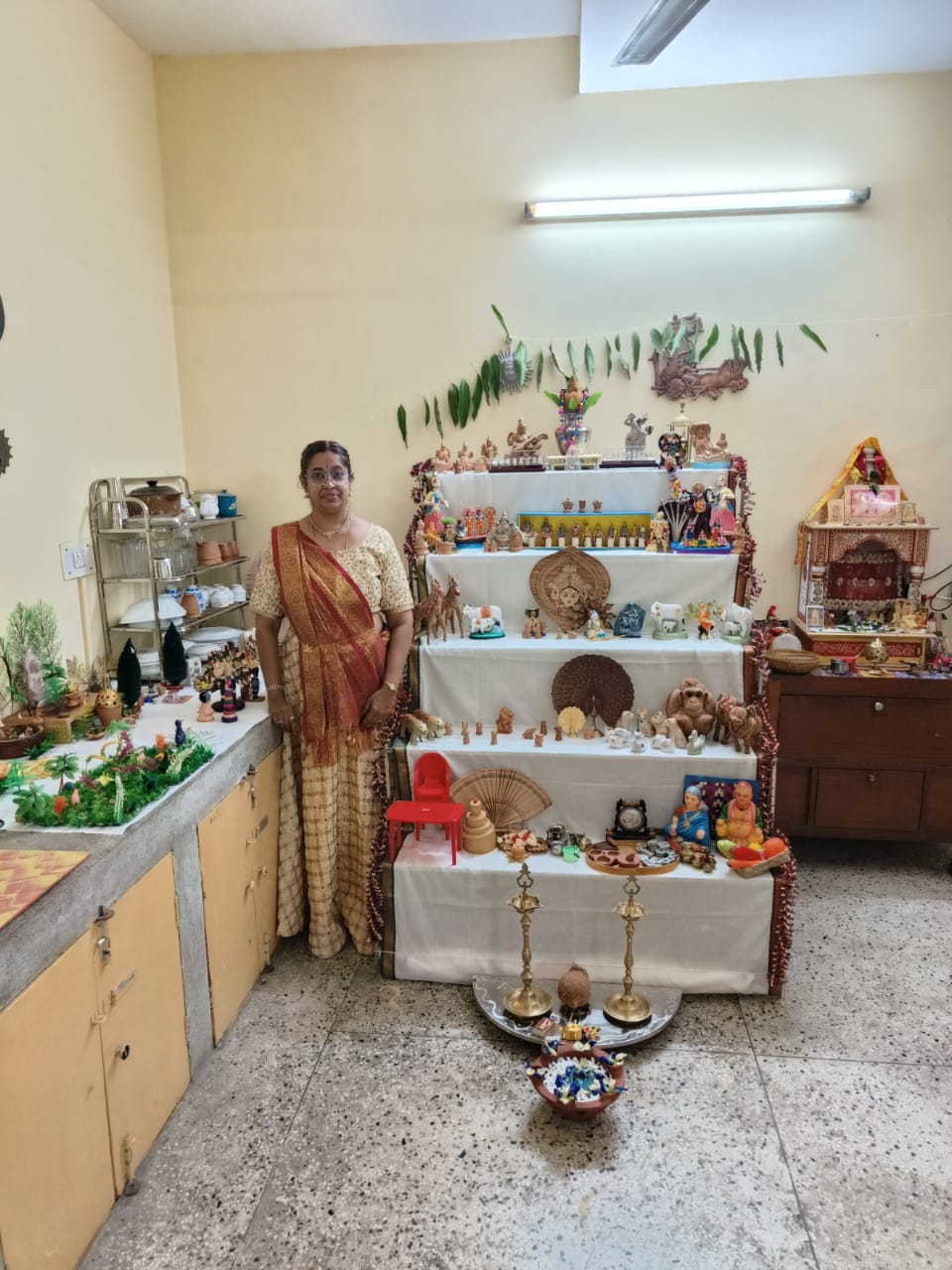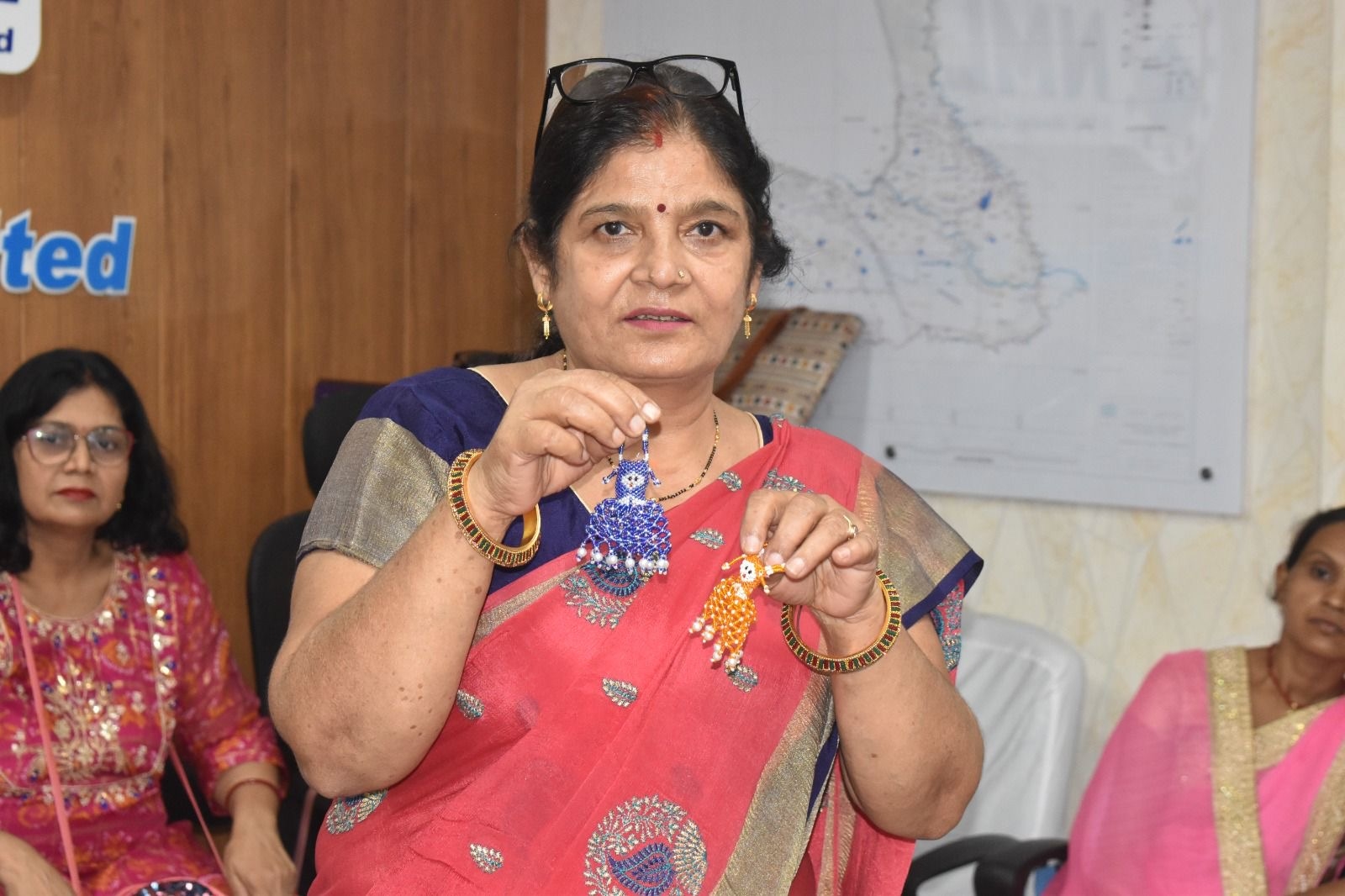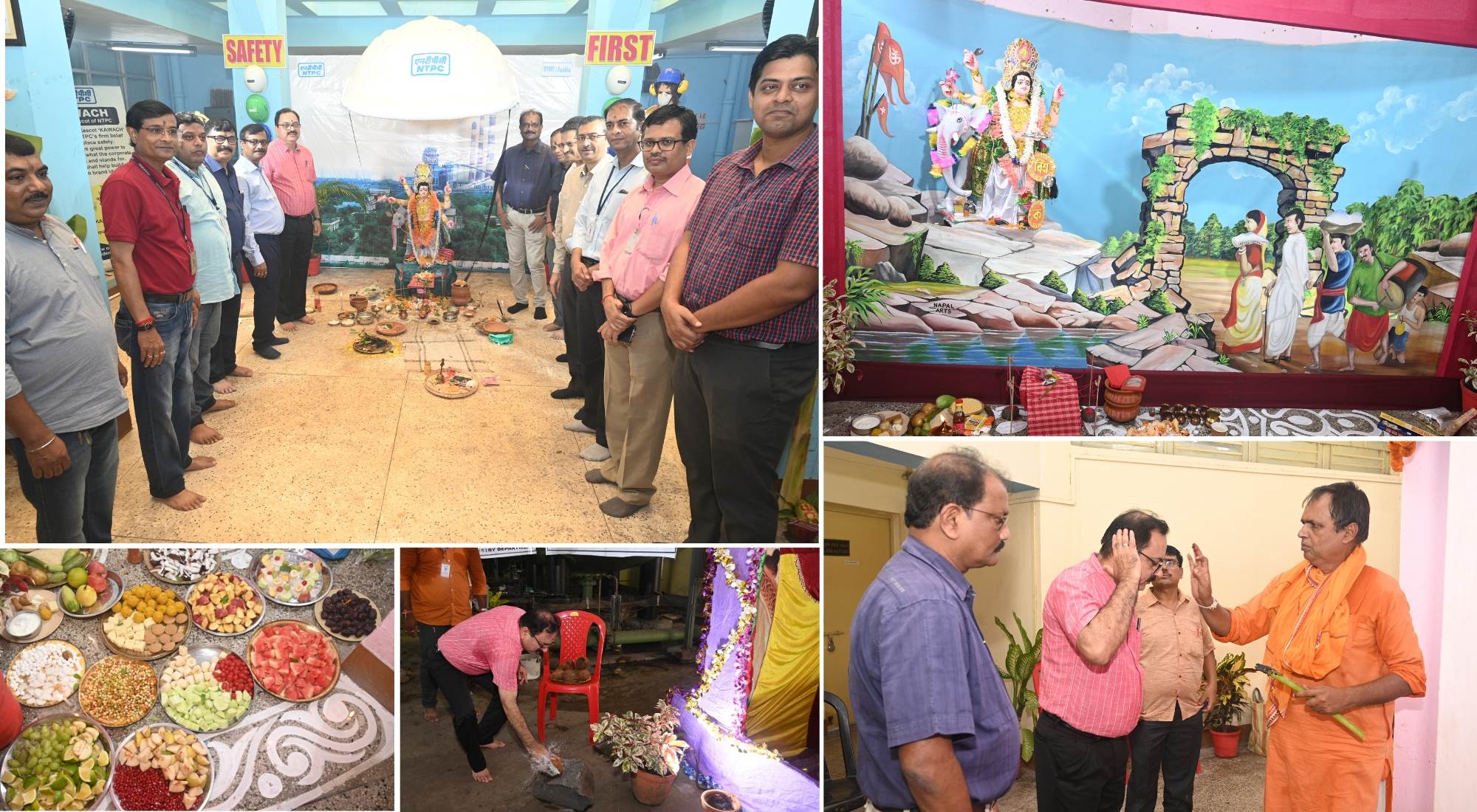Excitement mingles with the divine smells in the air......
"U will wear this pavadai(skirt) on day 1", says amma
'I want the muthu malai', says akka (elder sister)
"Patti ( grandmother), you will dress me up as Krishna first!", chirps the little one.
The lady of the house patiently listens to all this banter but her focus is on unwrapping the dolls.
The trunks are taken down from the attic. The wooden planks come up from the shed. The wooden stairs are set. Pristine white veshti (dhoti) is draped on the wooden stairs and pinned to stay in place. The stage is set!
Now comes the players from the trunk, each one wrapped in a newspaper. Carefully, the paper is unwrapped and the doll taken out. The paper is arranged in a stack for future use. The whole place is strewn with dolls of various sizes and shapes.
Idols of Gods, dancing ladies, band sets, thematic dolls from Ramayana, Mahabharatha, divine and demon all co-existing inside the trunk, along with policemen, army men, freedom fighters, modern technocrats along with the traditional grocer, the chettiar and his wife, all of them come out to be revered in the nine days of festivities.
Each day, puja is done in the morning and evening, daily one sundal (a snack made of pulses or lentils) is offered as prashaad.
The stair stage is set. It is minimum 3 steps and more odd number steps can be added. Each step is decorated with dolls. Starting from the bottom most step , the dolls get a place for themselves up to the top. The top most contains all the divine dolls along with the kalash at the center. The space around the stairs are also decorated, sometimes with a park or a tank or any theme that we choose.
Then comes the lights and floral decorations, no no, not real flowers, paper or cloth flowers made in-house by the women and the children learn how to make these too.
The piece de resistance is the Rangoli!
What should be the pattern, the colour combinations, everything is a discussion where the whole family participates. Some years, the kids win and get cartoon designs too for the Rangoli.
The 'Golu' as the festival is called, is set on the day after the Mahalay amavasya. The yearly, nine day celebration dedicated for women. The 'Tridevis' are revered and shows the importance of women in everyones life.
Also, a 'Me' time for women.
The women meet each other dressed up well and visit each other's Golu. The singing, dancing and dressing up their children in the form of various Gods, pirates, any character from the puranas and itihasas, police, probably the first fancy dress tradition, the variety of rangoli they make, the creative ways in decorating the Golu brings out all their latent talent to the fore.
The streets of 'agraharam' (the four streets around the temple complex in Tamil Nadu is called an agraharam) takes a festive look with children milling around in various costumes, hopping from house to house, collecting their friends too and meeting more friends.
The ladies also put on their best clothes and jewels all the nine days and visit neighbors and relatives Golu and exchange haldi kumkum, sing devotional songs on the Godesses.
The Navaratri is dedicated to Godesses Lakshmi, Parvathi and the 9th day, Navami is dedicated to Godess Saraswathi. The day all children love, as they have to keep all the books, pen, pencils, notebooks for worship and remove them only on Dasami day. The whole day, no studying, no playing instruments, only playing.
Dasami day or the 10th day is called the Vijaya Dasami, victorious day! This day the dols are put to sleep on the stairs and then removed, wrapped in paper or cloth and stored in the trunks for a year, waiting g for the next Navaratri.
An auspicious day for new beginnings School reopens for all. New admissions are made on this day too.
This is how I spent Navarathri during my childhood in Chennai.
Today, this has become an appointment based visits and gift exchange program. No child dresses up as Rama, Sita or Krishna, Radha, durga, raavan, a favorite hanumaan with a tail! The children made their own bow and arrow, flute, the mace and the tail too.
Many do not even keep a Golu. They just invite friends and relatives for haldi kumkum and snacks.
I keep a Golu every year but miss all those nostalgic moments of festivities.
But, change is the only constant in this life, I suppose.
By Smt. Subha Bharadwaj
W/O
Shri Rajesh Bharadwaj
GM (Maintenance)


 127
127



